Вы здесь
Southern Kazakhstan petroglyphs.
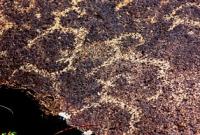
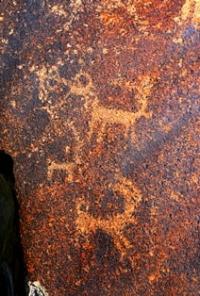
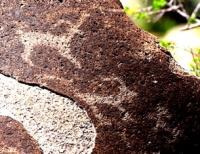
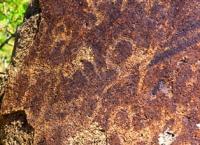
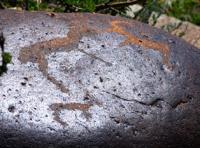
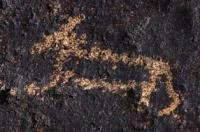
Quick trip to Turkestan.
“The traveler sees what he sees. The tourist sees what he has come to see”
G.K. Chesterton.
Whistle-stop trip to Tashkent.
Geographically, Southern Kazakhstan extends across three administrative regions (Zhambyl, South Kazakhstan and Kyzylorda). Most of the territory is flat and occupied by steppes, semideserts and deserts: in the south-west, on the left bank of the Syrdarya River, by the Kyzyl Kum sands and Shardara steppe; in the east, by the Moyinkum Desert between the valleys of Chu and Talas Rivers.
In the north, by the eastern edge of the Dala Desert (Golodnaya Steppe). The middle of the region is occupied by the Karatau Range (2,176m); in the south-east, borders are determined by the western spurs of the Talas Alatau (4,027m), Kyrgyz Alatau (3,820m); and in the south-west, by the Karzhantau (2,824m) and Ugam Ranges (4,238m).
The natural and climatic conditions of Southern Kazakhstan are favorable to the development of irrigated agriculture and various forms of cattle-breeding including nomadic. The specificity of that natural environment since antiquity has enabled a long coexistence of settled and nomadic communities.
Historically and culturally, this brings together Southern Kazakhstan and Semirechie that both occupy an intermediate position between Central Asia and the steppe-and-forest area of Siberia and the Urals, acting as a contact zone of oases and steppes.
Rock art sites are found in all Southern Kazakhstan mountainous regions. Rock paintings have not been discovered. The most numerous and well-researched petroglyphs are at Karatau; the leastresearched are in the Western Tien Shan highlands, home to the most notable highland complex of petroglyphs: Aksu-Zhabagly in Talas Alatua.
So far, nearly 50 petroglyph sites have been discovered and researched to a different extent in Southern Kazakhstan, but only the Aksu-Zhabagly petroglyphs receive protection due to their location within a wildlife preserve.
First reports about petroglyphs in the Karatau Mountains date to the early 20th century, but systematic research of the site commenced in the late 1950’s and related to activities of the Southern Kazakhstan Comprehensive Expedition of the Academy of Sciences (Senigova 1962: 87 - 97).
The discovery of most known locations in Southern Kazakhstan in the early 1970’s was due to the research and exploration of the Northern Karatau Party of the Archeological Expedition led by Kadyrbaev M.-K. and Maryashev A.N. (Kadyrbaev & Maryashev 1977: 8 - 10).
Petroglyphs within the two largest locations (Arpauzen and Koybagar) in 1970 - 1973 became a test site for the development of the then progressive methods of documentation and research of rock engravings. In the 1980’s, several locations of petroglyphs in the southern part of Karatau were discovered and explored by Samashev Z. (Teris, Zhyngylshek).
Research of Southern Kazakhstan sites intensified at the beginning of this century: a large location of petroglyphs (Sauiskandyk) was discovered in Northern Karatau (Samashev Z. & Shvetz I.N.); a series of sites in Central Karatau was explored (Maryashev A.N. & Potapov S.A.).
Documentation and research of petroglyphs at Arpauzen and Koybagar, as well as at Tamgalytas in Betpakdala continued (Rogozhinskiy A.E.), in line with site conservation objectives and preparation for a UNESCO serial nomination.
Rock Art in Central Asia 26 Many Southern Kazakhstan sites include petroglyph complexes dated to different periods, the most ancient to the Bronze Age. Late Bronze Age (last third of the 2nd millennium BC) engravings are identified from specifics of style, repertoire, and images of items from real life (chariots, armor).
This pictorial tradition is also represented on sites at Semirechie, in the Near Issyk-Kul Area, the Talas Valley, and Western Tien Shan. Petroglyphs dated to the first half of the 2nd millennium BC are the most diverse, with two key pictorial traditions.
Petroglyphs related to the Seymin-Turbin artistic tradition of the steppe area in Kazakhstan (Saryarka); petroglyphs whose repertoire and style clearly reflect the influence of the culture and art of pre-historic Central Asia. Analogies exist with Zeravshan Valley sites (Sarmishsay, Soyi-Sobog), Kyzyl Kum (Bukantau) and the southern part of the Chu-Ili Mountains at Semirechie (Kulzhabasy).
Pictorial traditions dated to the Early Iron Age are clearly notable at the Karatau and Talas Range sites in relation to: first, to the tradition of images on “deer stones” in Western Mongolia, Tuva, and Altai; second, to the Early Saki art of nomads in Syrdarya and Pamir.
Medieval engravings are also numerous and common wherever petroglyphs are found. Places where natural cliffs or stelae predominantly or exclusively have tamgas and epigraphy (Tamgalytas) constitute a special category in Southern Kazakhstan.
Another specificity of Southern Kazakhstan is the abundance of modern petroglyphs (XVIIth - early XXth centuries) and a preserved tradition of creating rock art in the present.
Authority:
“Rock Art Sites in Kazakhstan”. Alexey E. Rogozhinskiy.
Photo by
Alexander Petrov.







